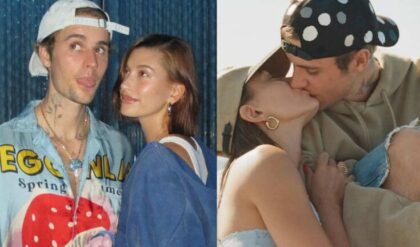And lo, the scriptures proclaim that never was there ever a detective more true than Wayne Hays. The Arkansas policeman served two terms in the ‘Nam, long-range reconnaissance, the stuff Rambo dreams are made of.
Now he tracks wild boar for fun, as all human males must do. Wayne’s favorite comic book heroes are the Batman and the Silver Surfer, two multiverses’ moodiest loners. On the job he hunts by moonlight, trail-tracking missing kids and the monsters who snatched them. “It’s too dark, man!” protests his partner. “I don’t care,” Wayne responds. Message received. Wayne’s a true detective. Too dark’s not dark enough.
:max_bytes(150000):strip_icc():format(webp)/true-detective5-2000-83b88ba5b4254b18a0e7ec49ce6ad3a1.jpg)
Oscar winner Mahershala Ali plays Wayne on the new season of HBO’s crime anthology True Detective (airing Jan. 13 at 9 p.m. ET on HBO). This third True Detective looks so much like the first True Detective and emphatically nothing like the second True Detective. We meet Wayne in three distinct time periods. In 1980, he’s investigating two lost children. In 1990, he’s haunted by that case. In 2015, he’s double-secret-haunted by that case. (Old Wayne also suffers from creeping dementia, which conveniently keeps important plot points out of reach.) In the later timelines, flashbacks spark from inquisitions: Wayne’s speaking to lawyers in 1990, and withstanding a documentary film crew in 2015.
You recall Matthew McConaughey pondering beer-can philosophy during Rust Cohle’s neverending police interrogation. And Wayne has a very Cohle-ic personality, cerebral, ruminative, another world-weary workaholic. He’s been buddy-copped with Roland (Stephen Dorff), another good ol’ skirtchasing everyguy cop with hair as blond as Woody Harrelson’s once was on Cheers. And remember those scary devil’s net things Rust found on the trail of the Yellow King? Our new cops keep finding spooky kids’ dolls, because dahling, you’re simply not a spooky serial killer if you don’t leave a trail of DIY breadcrumbs.
We’re miles from the trashfire excess of season 2. Gone are the days of Colin Farrell’s cocaine pull-ups, Rachel McAdams’ decorative knife dummy, and Vince Vaughn’s profound soliloquies about pure golden Stan. The new somber mystery will satisfy fans seeking the old True Detective high, and the Ozarks setting will surely please your cousin who loves Ozark. The acting is very strong. Scoot McNairy and Mamie Gummer are believably demolished as the missing kids’ parents. Ali finds reservoirs of warmth in his chilly, paranoid outsider. Dorff’s a laconic delight. And Carmen Ejogo gives a compelling performance as Amelia, a local schoolteacher who becomes embroiled with the case — and with Wayne.
Director Jeremy Saulnier gave the world 2013’s Blue Ruin, one of the pulpiest (and bleakest, and funniest) crime films of the decade. He helms the first two episodes of this season, and he brings a lyrical quality to the bleak happenings. One memorable shot of a search party walking through the woods resembles a boggy fairy tale hellscape.
But Saulnier departs the series after the second hour. And the episodes that follow (I’ve seen through the fifth) feel repetitive, dreary, self-serious if not just mopey. Wayne and Roland drive, talk, moan, interrogate, drive, talk, moan, interrogate. Amelia’s involvement turns this season into a kind of relationship narrative, and yet I’m not sure creator Nic Pizzolatto really knows what to do with the character. She exists as a foil for Wayne, prodding him toward action across three timelines. There is, I think, one scene in the first five episodes where Amelia speaks to another human female. And that conversation involves repetitions of the phrase “I’ve got the soul of a whore,” surely something some human female said once.
Pizzolatto was the sole credited writer on the second True Detective, which became a ludicrously go-nowhere saga. He’s helped a bit here by Deadwood creator David Milch, who receives a rather unfortunate co-writing credit on the “soul of a whore” episode. The most interesting thing about Pizzolatto is the way his narratives feel both nostalgic and apocalyptic. Apocalyptic, because Wayne and Roland explicitly represent a world that’s long gone. Ali tries hard to suggest the traumatized psychology pushing Wayne forward. By episode 5, though, all that darkness starts to feel like a hard candy shell, revealing a pretty straightforward good-man-defeats-evil narrative. Meanwhile, their very names evoke cluebaiting nostalgia. Wayne, as in John. West, like the wild one. (Googling “Roland West” will lead you, inevitably, to Batman.)
True Detective‘s success in 2014 prompted a renewed fascination with serialized crime narratives. You can draw a direct line to stuff like The Sinner — and to Showtime’s decision to greenlight a new Twin Peaks. And you can draw a hazier line to the True Crime renaissance, from Serial and Dirty John to the whole Making a Murderer docugenre.
So this season’s attempt to bring back the old True Detective magic also feels a bit stale. This season’s Big Action Thing is a snooze. This year’s hallucinations are less haunting than inadvertently funny. Also not helping: In the 2015 timeline, Wayne runs afoul of someone who might turn out to be the single most ludicrous character on television in 2019. The documentarian filming Old Wayne by is a director named Elisa (Sarah Gadon). And it takes very little time for Elisa to turn into a complete millennial pastiche, the kind of person who says stuff like “I’m interested in the intersectionality of marginalized groups within authoritarian and systemic racist structures.” (Pause for eyeroll.)
At the risk of becoming a millennial pastiche myself, it seems to me that Pizzolatto remains fascinated with a kind of affronted masculinity, all these noble guys feeling melancholy about the world only they can save. It gets a bit grating. The death of Steve McQueen, icon of manhood, gets brought up a few times in the season premiere. Quoth Don Draper: Jesus, maybe it’s a metaphor!





